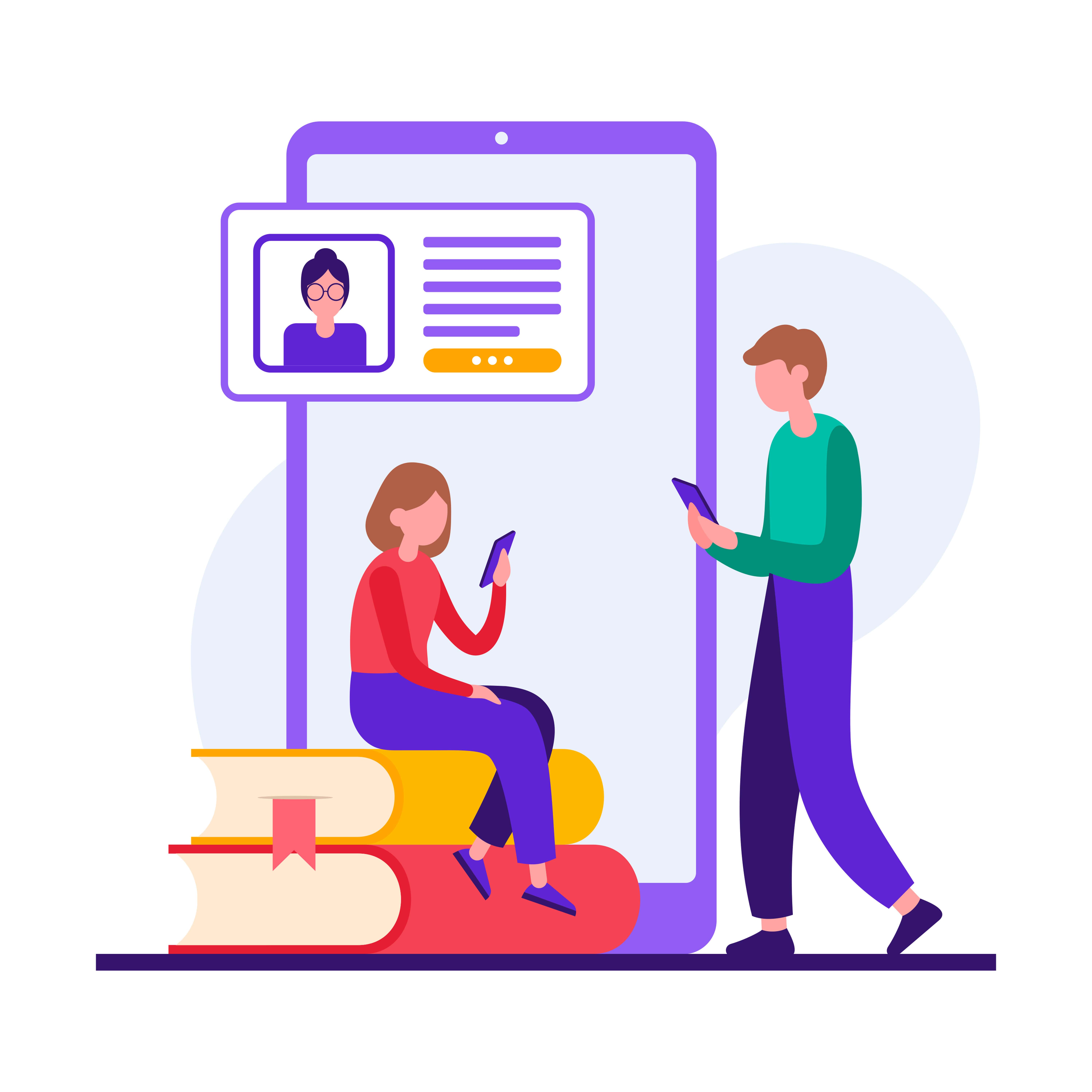A new era of employee well-being is quickly setting the framework for workplace culture. As younger generations enter the workforce, new wellness pillars like financial stability, mental health, and social connection are shaping what it means to be supported at work.
And in 2023, a critical must-have for candidates and employees alike will be the freedom to explore career advancement opportunities as the job market evolves.
The pandemic highlighted the reality that many jobs can be replaced at a moment’s notice. The skills that today’s workers have perfected through years of experience (and student loans) aren’t necessarily required to support the backbone of our current economy, especially as automated and easily accessible software becomes available for half the cost of labor.
And while that outlook on the division of labor may seem bleak, employees are demonstrating their value in ways you might not expect.
Employees Are Eager to Learn
According to a joint study from Boston Consulting Group (BCG) and The Network, a global alliance of more than 60 leading recruitment websites, 65% of workers are currently devoting more personal time than ever to learning skills that can translate to a variety of work opportunities.
But instead of leaving their companies to pursue career paths that align with their new skills, employees are creating ways to use those skills internally.
From developing new positions to learning skills that increase versatility, employees are leveraging internal career mobility to seize ownership of their careers. And, as employees become the captains of their own career paths, managers and companies as a whole are benefiting from their desires for advancement.
According to LinkedIn’s Workplace Learning Report, 94% of employees said they would have stayed with their employers longer if career development was prioritized. Giving employees agency over their careers empowers them to grow personally and professionally, helping them become more productive and engaged.
Taking a skills-focused approach to career development doesn't just give employers a competitive edge when hiring new candidates—it also transforms talent into a renewable resource. It gives companies the power to withstand unpredictable economic shifts and employees the freedom to flourish into versatile professional assets.
What Does Internal Career Development Look Like?
Companies that invest in skills learning enable the performance, development, and personal well-being of their employees.
When employees are encouraged to take advantage of internal mobility opportunities—whether it’s upskilling, reskilling, or cross-skilling—people metrics like engagement and retention increase.
Tying those learning metrics to incentive-based engagement campaigns not only empowers employees to evolve personally and professionally—it also boosts business outcomes and growth by creating a solid case for data-reinforced learning initiatives.
Upskilling
As companies evaluate which types of learning opportunities make sense for their employees, upskilling is the easiest and most commonly implemented.
Upskilling enables employees to strengthen existing skills or develop new ones to advance their careers. For example, if an IT employee wants to enhance their programming skills, they might take a coding workshop or attend a virtual conference.
Upskilling is most effective for employees who want to advance their career paths within their current fields. In addition to pursuing workshops and conferences, employees may also upskill through:
- Formal or competency-based education
- Certifications
- College courses
- Professional associations within networks
On top of increasing potential for promotions and enhancing productivity, upskilling also facilitates the acquisition of valuable skill sets amidst global or economic shifts.
After the insurgence of automation and economic uncertainty during the pandemic, the World Economic Forum projected that 85 million human-led jobs will be displaced by machine-operated positions by 2025, increasing the need for upskilling opportunities in the workplace.
Reskilling
Instead of honing existing skills to further their careers, employees can also grow professionally by learning net-new skills for jobs in different fields or departments.
Reskilling equips employees with the tools needed to assume new roles in their companies. For example, if an accounting specialist wants to learn the necessary skills for a sales position, managers can provide shadowing opportunities, training sessions, and skills courses to transition that employee into a new department.
Reskilling becomes especially useful for employees who need a change of pace. Utilized strategically, it can even reduce burnout and improve morale by motivating employees for engaging in work that aligns with their interests.
According to BCG and The Network’s survey, almost seven in ten employees are open to reskilling, especially as the nature of work continues to change. This willingness is particularly high among young employees in the early and middle parts of their careers.
Cross-Skilling
If skills learning is truly a transferable internal resource, what’s stopping employees from learning a variety of soft and hard skills that apply across different roles?
Cross-skilling enables employees to develop skills that translate to many different functions and departments. It’s particularly effective in mitigating lapses in operation by training more than one employee in an organizational task.
Consider an office manager who takes paid medical or parental time off. To ensure the essential tasks for that role are completed in their absence, an employee from a different department can be cross-trained to learn any necessary skills and fill in.
Aside from giving employees the freedom to acquire new soft and hard skills, cross-skilling also serves as another gateway to engagement. Enabling employees to engage with different tasks gives their positions value and further secures them as assets to organizational success.
How to Upskill, Reskill, and Cross-Skill
Empowering employees to continually advance skills, knowledge, and competencies not only has the potential to increase engagement and decrease turnover—it also upholds career ownership as an integral part of employee well-being.
LinkedIn Learning’s 2021 Workplace Learning Report affirms that 64% of employees currently view learning and development in the workplace as a “need to have” rather than a “nice to have.” And, to fully receive the return on investment of career development and mobility, it’s essential to establish strategic processes for long-term organizational growth.
1. Make Workforce Planning Strategic and Dynamic
Skills learning and internal mobility initiatives can easily fall flat without continuously evolving best practices.
While a once-per-quarter timeline is a lucrative place to start, employers need to treat strategic workforce planning as a toolkit that can be amended in real-time, especially as economic conditions and business circumstances change. This type of process not only protects organizations with an internal career plan should unforeseen employment shifts arise—it also shows employees that career mobility matters, is taken seriously, and is always evolving based on their needs.
2. Empower People Managers to Support Employee Career Goals
As today’s workers continue to prioritize career development, managers are quickly becoming the gatekeepers to skills learning and engagement.
LinkedIn Learning found that in the first half of 2021, only 40% of employees were challenged and encouraged by managers to learn new skills. While skills learning and career mobility are relatively new concepts for many organizations, the demand for both is quickly surpassing the supply.
People managers who encourage and reward employees for learning new skills are integral to identifying current and future skills gaps. By successfully connecting workers with learning, advancement, and mobility opportunities, managers can build solid business cases for internal learning initiatives.
💡 Pro tip:
People managers can also receive direct employee feedback on which programs work and which don’t—data that can be used to influence engagement and retention.
3. Upskill, Reskill, and Cross-Skill at Scale
Prioritizing skills learning in the workplace may seem simple, but planning areas of focus often seems impossible to forecast.
Rather than hoping for the best, employers will see more success building large-scale learning and development programs centered around continuous skills management.
It all starts with infusing a learning-journey mindset across all areas of an organization. Giving employees the chance to increase their skill sets and tracking their progress opens doors for upskilling, reskilling, and cross-skilling opportunities.
Customized skills learning programs that are personalized to each individual employee’s learning journey can be even more effective. Not only does this demonstrate the value and versatility of each employee to managers, but it also allows employees to own, monitor, and evolve their learning journeys.
Another essential element of large-scale learning programs is determining what your bottom line looks like for a sufficient skills investment. Comparing the costs of skills learning (i.e. training costs, time off, extraneous administrative costs) with that of not doing so (i.e. filling new roles, recruiting and onboarding, lay-offs, severance packages) will provide a clearer picture of how much to invest in career development.
A great example of large-scale learning programs at work is Capital One's Developer Academy (CODA), which trains college graduates without technical degrees in software engineering. Rather than directly outsourcing software engineers in an already competitive job market, Capital One invests in its own talent pipeline through CODA, boosting retention, engagement, and career development.
Investing in Learning and Development is Investing in the Future
The shape of work is constantly changing—forcing organizations from all industries to adapt or be left behind.
While shifts in workplace health and well-being and job security can’t be predicted, companies can shield themselves by leveraging their most valuable assets—employees who are eager to learn. Taking a skills-learning approach to career development through upskilling, reskilling, and cross-skilling helps workers grow professionally while also improving organizational retention.
A successful learning and development program requires employers to treat skills-learning as an ongoing, ever-changing process. If you want expert support in weaving a learning and development strategy into your company’s wellness program, reach out to our Strategic Well-Being Consultants today.



